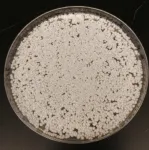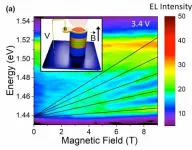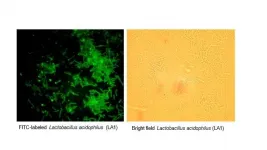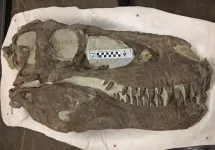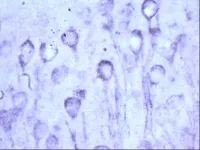(Press-News.org) PHILADELPHIA - Renter protection policies that have curbed mass evictions during the COVID-19 pandemic have played a key role in preventing the spread of SARS-CoV-2 in U.S. cities, according to a new study published in Nature Communications.
Using an epidemiological model to predict how evictions and eviction moratoria would impact the epidemic, the researchers found, for instance, that in a city of 1 million in which 1 percent of households experience eviction monthly, this could lead to up to 49,000 excess COVID-19 infections. In Philadelphia alone, a fivefold increase in evictions, predicted by some economic analyses, could lead to 53,000 extra infections. The study was led by researchers in the Perelman School of Medicine at the University of Pennsylvania, Johns Hopkins University, and the University of Illinois at Urbana-Champaign.
"Our model shows clearly that policies to stem evictions are not only a warranted but a necessary component of COVID control. As long as the virus is circulating, ending these protections could have devastating implications in the United States," said co-senior author Michael Z. Levy, PhD/a>, an associate professor of Epidemiology in Penn's Perelman School of Medicine.
Record levels of unemployment have put millions of Americans at risk of losing their homes throughout 2020 and 2021. At the start of the pandemic, many cities and states enacted temporary legislation banning evictions, some of which have since expired. On September 4, 2020, the Centers for Disease Control and Prevention (CDC) imposed a national moratorium on evictions, which was extended in March 2021. This order is currently being challenged in various courts.
In addition to a number of well-documented adverse outcomes, evictions would also have outsized repercussions on the growth rate of the COVID-19 epidemic, Levy and his research team predicted in the summer of 2020. The effect emerges from increases in household sizes -- data suggest that, once evicted, households tend to "double-up," moving in with friends or family. Household transmission can also limit or delay the effects of measures like lockdowns, which aim to decrease the contact rate in the general population.
"Evictions were particularly concerning for us, because a growing number of contact tracing studies have shown that households are a major source of SARS-CoV-2 transmission. When households get bigger, that gives the virus a greater opportunity to get inside the home, and then, a greater chance to spread outside of it -- to coworkers, friends, and other family members," study co-author Alison Hill, PhD, an assistant professor at the Johns Hopkins University School of Medicine.
To quantify this effect, the research team modified an epidemiological model known as SEIR (susceptible, exposed, infectious, and recovered) to track the transmission of SARS-CoV-2 through a hypothetical metropolitan area of 1 million individuals. They then used a two-layer "network model" to show the contacts within a city population over which infection can spread: One layer described contacts within the household, estimated from the 2019 American Community Survey of the U.S. Census, and the second layer constituted contacts outside the household, such as work colleagues, classmates, and friends.
The researchers modeled evictions that resulted in the "doubling up" of households by merging each evicted household with one randomly selected household in the network. They then adjusted the number of contacts outside the household over the course of the simulations to capture the effects of lockdown measures and their subsequent relaxation.
The research team found that with a low monthly eviction rate of 0.25 percent, an estimated 0.5 percent more of the population could become infected with COVID-19 -- or about 5,000 excess cases per 1 million residents -- compared to if there were no evictions. A 1 percent monthly eviction rate could lead to 19,000 to 49,000 excess cases. With an eviction rate of 2 percent per month, that number jumps to 50,000 to 100,000 excess infections in a single city.
"Our results suggest that the CDC-mandated national order prohibiting evictions from Sept 4 - Dec 31, 2020 likely prevented thousands of excess COVID-19 infections for every million metropolitan residents," according to the study authors.
Their initial model assumed that mixing between households occurs randomly throughout a city and that evictions are uniformly distributed. However, data throughout the pandemic has consistently showed that both COVID-19 and evictions disproportionately affect poorer, minority communities. The research team therefore adjusted their model to evaluate the effect of evictions in a specific, diverse city - Philadelphia, Pennsylvania, which has one of the highest eviction rates among large U.S. cities.
In July 2020, Philadelphia's City Council passed the Emergency Housing Protection Act, in an effort to prevent evictions during the pandemic. The city was sued by a lobbyist group, which questioned whether the legislation was of broad societal interest, rather than protecting a narrow class of residents. This prompted Levy's team to assess the claim.
Their simulations showed that allowing evictions to resume in Philadelphia could substantially increase the number of COVID infections in the city, and that these increases would be felt among various socioeconomic populations, including those experiencing a low number of evictions. With evictions occurring at only their pre-pandemic rates, the epidemic would infect an extra 0.3 percent of the Philadelphia population, or 4,700 individuals. However, the researchers point out, many economic analyses predict the eviction crisis could be much higher if allowed to resume, due to the economic fallout associated with COVID-19. With a five-fold increase in evictions, excess infections would increase by 53,000 in the city.
"These simulations show that a change that seemingly only affects a small proportion of the population can have a great impact across interconnected communities," Levy said. "Evictions not only affect the evicted, but they can endanger an entire city."
INFORMATION:
Additional Penn authors include Justin Sheen, Julianna Shinnick, and Maria Florencia Tejeda.
This work was supported by grants from the U.S. National Institutes of Health DP5OD019851 and R01AI146129, the COVID Supplement CDC-HHS-6U01IP001137-01, and from Google Cloud and the Google Cloud Research Credits program.
An overgrowth of yeast in the gut within the first few months of life may cause changes to the immune system that increase the risk of asthma later on, shows a study published today in eLife.
Asthma is a common and sometimes difficult-to-manage, life-long lung condition that affects one in 10 children in developed countries. The findings explain a possible cause of asthma and may help scientists develop new strategies to prevent or treat the condition.
The period just after birth is a critical window for the development of a healthy immune system and gut microbiome. ...
Charcot Marie Tooth and Dejerine-Sottas syndrome are groups of diseases that involve the breakdown of the myelin sheath covering nerve axons.
As this myelin sheath breaks down, people who have these disorders suffer nerve damage in the arms and legs--those with Dejerine-Sottas disease may never walk or may lose the ability to walk by the time they are teenagers.
Researchers have known that a protein called PMP22, which is important for nerve myelin, is likely involved in the disease. But because the protein is so small and part of the cell membrane, ...
Scientists have produced a comprehensive roadmap of muscle aging in mice that could be used to find treatments that prevent decline in muscle mobility and function, according to a report published today in eLife.
The study reveals which molecules in the muscle are most significantly altered at different life stages, and shows that a molecule called Klotho, when administered to mice in old, but not very old, age, was able to improve muscle strength.
Age-related loss of skeletal muscle mass and function - called sarcopenia - is associated with loss of mobility and increased risk of falls. Yet, although scientists know how sarcopenia affects the appearance and behaviour of muscle tissues, the underlying molecular mechanisms for sarcopenia remain poorly understood. Current treatments ...
Diodes are widely used electronic devices that act as one-way switches for current. A well-known example is the LED (light-emitting diode), but there is a special class of diodes designed to make use of the phenomenon known as “quantum tunneling”. Called resonant-tunneling diodes (RTDs), they are among the fastest semiconductor devices and are used in countless practical applications, such as high-frequency oscillators in the terahertz band, wave emitters, wave detectors, and logic gates, to take only a few examples. RTDs are also sensitive to light and can be used as photodetectors or optically active elements in optoelectronic circuits.
Quantum tunneling (or the tunnel ...
Philadelphia, April 20, 2021 - Intestinal epithelial tight junctions (TJs) act as a functional and structural barrier against harmful antigens that promote intestinal inflammation in inflammatory bowel disease (IBD) and other inflammatory conditions of the gut. A defective intestinal TJ barrier, sometimes known as "leaky gut," plays an important role in exacerbating and prolonging intestinal inflammation. New research reported in The American Journal of Pathology, published by Elsevier, shows that the probiotic Lactobacillus acidophilus (L. acidophilus) strain known as LA1 can generate a rapid and sustained enhancement of this defective intestinal barrier and effectively treat intestinal inflammation by preserving and restoring ...
Current national strategies for bridge maintenance favor replacement over maintenance. A fairly simple depreciation formula is used, resulting in overly conservative assessments of a bridge's long-term health. In a study published in the American Society of Civil Engineers' Journal of Performance of Constructed Facilities, researchers from UGA's College of Engineering propose a new model for the first time. This new approach considers the interaction of 60 to 80 bridge components in predicting long-term bridge performance and focuses on maintenance instead of replacement.
"Rather than considering a bridge as a monolithic structure, the bridge coactive model assesses a bridge as a system in which changes in the condition of each coactive element not only directly affects the ...
FAYETTEVILLE, Ark. - The fearsome tyrannosaur dinosaurs that ruled the northern hemisphere during the Late Cretaceous period (66-100 million years ago) may not have been solitary predators as popularly envisioned, but social carnivores similar to wolves, according to a new study.
The finding, based on research at a unique fossil bone site inside Utah's Grand Staircase-Escalante National Monument containing the remains of several dinosaurs of the same species, was made by a team of scientists including Celina Suarez, University of Arkansas associate professor of geosciences.
"This supports our hypothesis ...
TAMPA, Fla (April 20, 2021) — Chaperone protein imbalance can play a significant role in initiating toxic accumulation of tau in the aging brain - an early step in the development of Alzheimer's disease and related neurodegenerative disorders known as tauopathies, a new preclinical study by University of South Florida Health (USF Health) neuroscientists suggests.
In humans, misfolding of the protein tau leads to its toxic accumulation inside brain cells, the formation of these tau aggregates into hallmark neurofibrillary tangles, neuron death, and eventually symptoms of cognitive decline such as memory loss and diminished thinking skills.
In this study the ...
LOS ALAMOS, N.M., April 19, 2021 -- A recent series of experiments at the National High Magnetic Field Laboratory (National MagLab) at Los Alamos National Laboratory leveraged some of the nation's highest-powered nondestructive magnets to reveal an exotic new phase of matter at high magnetic fields. The experiments studied the unusual Kondo insulator ytterbium dodecaboride (or YbB12) and were the first results from the new 75-tesla duplex magnet housed at the National MagLab's Pulsed Field Facility at Los Alamos.
"This magnet and the resulting experiments are the first fruits of the National Science Foundation-supported pulsed magnet surge," said Michael Rabin, director of the Pulsed Field Facility at Los ...
Radiation at terahertz frequencies (wavelengths between 0.03 and 0.3 mm) can be used successfully to analyze the structural dynamics of water and biomolecules. But applying the technique to aqueous solutions and tissues remains challenging, since terahertz (THz) radiation is strongly absorbed by water. While this absorption enables certain analyses, such as the structure of water and its interactions with biological solutes, it limits the thickness of samples that can be analyzed, and it drowns out weaker signals from biomolecules of interest. Strong absorption of THz ...

